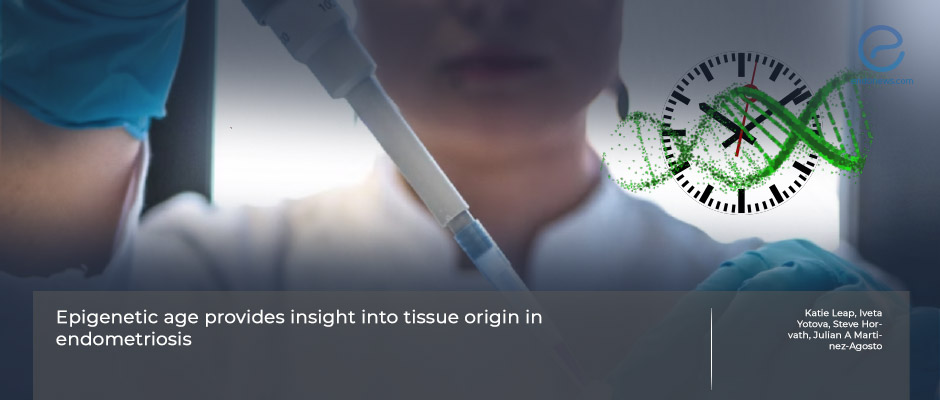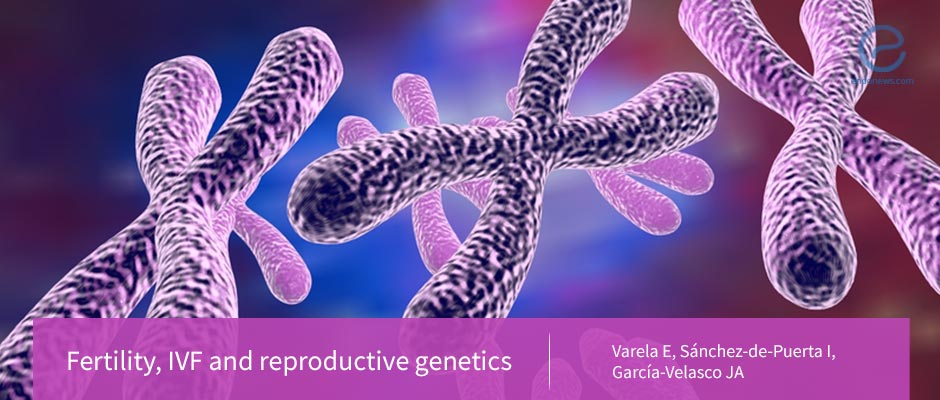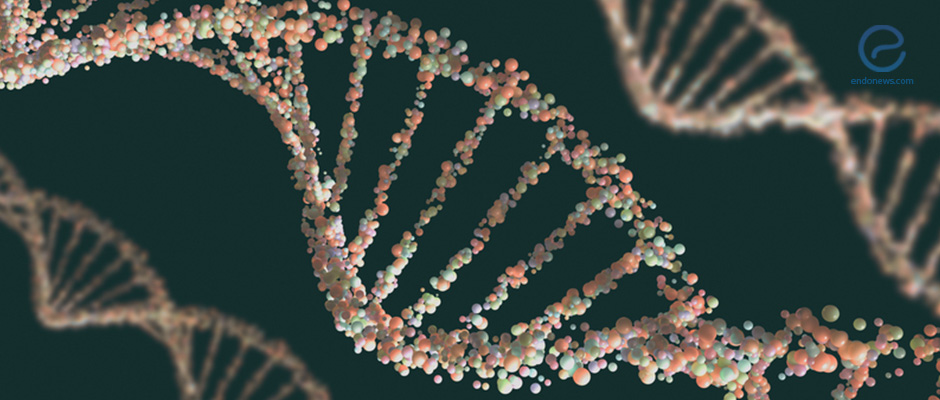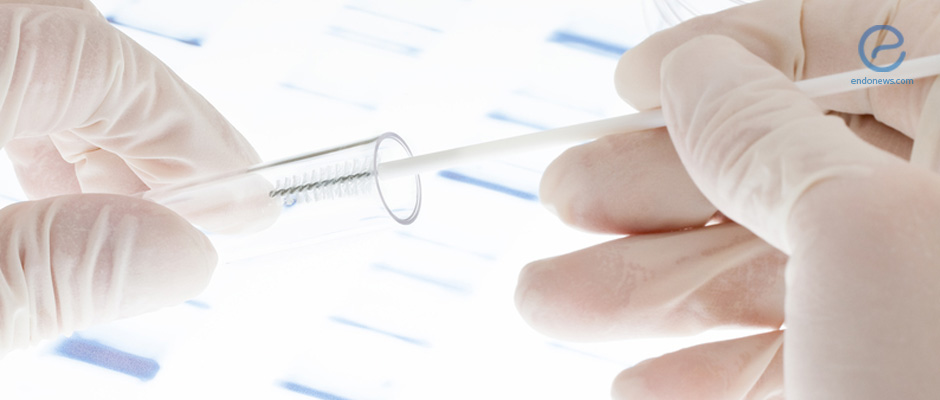Genetic Overlap Between Endometriosis and Autoimmune Disorders
Women with endometriosis may face a higher risk of developing several immune-related conditions, according to a large study led by Rahmioglu and Zondervan, published in Human Reproduction. Using data from more than 270,000 women in the UK Biobank, the researchers…
Key Points Lay SummaryCell-Aging-Related Pathways Linked to Endometriosis Pathogenesis
The biology of endometriosis continues to challenge conventional understanding. While inflammation, hormonal imbalance, and immune dysfunction have long been recognized, this new study explores an entirely different dimension—cellular aging. Researchers from Shanghai Obstetrics and Gynecology Hospital, used a multiomic approach…
Key Points Lay SummaryStudy Points to Polygenic Etiology in Familial Endometriosis
A team of researchers from Italy identified new genes that may be associated with endometriosis. The team analyzed a multi-generational family affected by the disease. Their findings support a polygenic model of the disease, i.e., a model where more than one…
Key Points Lay SummaryHeavy Menstrual Bleeding Shares Genetic Risk with Endometriosis and Fibroids
Heavy menstrual bleeding (HMB) is a common yet underexplored condition affecting millions of women worldwide. It can severely impact quality of life and is often associated with other gynecologic disorders like endometriosis and fibroids. In a recent landmark study published…
Key Points Lay SummaryTraumatic experiences in early life and later development of endometriosis.
Endometriosis is a chronic, progressive condition affecting 10–15% of women worldwide, yet current treatment options remain limited, and diagnostic tools are inadequate. This shortfall stems largely from an incomplete understanding of its underlying pathophysiology. In recent years, researchers have begun…
Key Points Lay SummaryEndometriosis and Ovarian Cancer: A Genetic Connection
Academicians Zhang and Yan from Ningbo University, Zhejiang, China, have recently published a pivotal study in Scientific Reports examining the cancer risk associated with endometriosis. Endometriosis, a chronic condition affecting approximately 6–10% of women worldwide, significantly diminishes quality of life…
Key Points Lay SummaryEndometriosis and PCOS Share Common Risk Genes
There is a genetic correlation and shared risk genes between endometriosis and polycystic ovary syndrome (PCOS), found a new study published in the scientific journal Frontiers in Endocrinology. “These findings provide insights into the potential mechanisms behind their comorbidity and…
Key Points Lay SummaryA review for genetics of endometriosis.
There is an increased risk of developing endometriosis among first-degree relatives, which can raise suspicions of the role of genetic factors in endometriosis. Genome-wide association studies and next-generation sequencing have identified numerous genetic loci and variants relating to the disease.…
Key Points Lay SummaryEndometriosis and Genetic Polymorphisms in Proinflammatory Cytokines
Several pathophysiological mechanisms have been proposed for the chronic inflammatory nature of endometriosis, such as retrograde menstruation, coelomic metaplasia, hormonal change, oxidative stress and inflammation, immune dysfunction, and apoptosis suppression. One of the most widely accepted theories in recent years…
Key Points Lay SummaryExploring tissue origins and age characteristics in endometriosis
Despite its widespread occurrence, the precise factors leading to endometriosis and the nature of its symptoms remain uncertain. To better understand the disease and improve treatment, Leap et al. from the US and Austria explored the use of DNA methylation…
Key Points Lay SummaryScientific unfolding will lead new drug targets
Drs. Dolmans and Donnez from academic institutions located in Brussels, Belgium, have published their comprehensive review on the current pathophysiological concepts in endometriosis with possible drug treatment potentials in the recent issue of a scientific journal named “Biomolecules”. As a…
Key Points Lay SummaryScientists Try to Understand Consequences of Genetic Changes in Endometriosis
The protocol of the "Endometriosis Research Queensland Study" has been published in the scientific journal BMJ Open. The aim of the study is to collect endometrial tissue associated with the disease and chart its genetic architecture. This way, the researchers aim to…
Key Points Lay SummaryEpigenetic changes in endometriosis: A new target area for therapy
Epigenetics is the heritable genetic modifications and changes in chromosomes without alterations in the DNA sequence. Numerous mechanisms, like DNA methylation and RNA editing to mention a couple, have been discovered as epigenetic alterations that are triggered by environmental factors.…
Key Points Lay SummaryEndometriosis Prediction by "Machine Learning"
To develop a predictive model for endometriosis and to re-assess the contribution of known risk factors, Blass et al. from the Hebrew University of Jerusalem, Jerusalem, Israel used the data of the UK biobank by machine learning-based models. They compared and…
Key Points Lay SummaryGenetic prediction models for endometriosis diagnosis
There are many studies trying to find a mysterious gene that would solve all the mysteries of endometriosis, yet none have been identified up to now. In the study conducted by She et al, the authors revealed an R system…
Key Points Lay SummaryInflammatory and genetical background of endometriosis may yield new therapeutic approaches
Elisa Giacomini and colleagues from medical centers in Milan, Italy have published their review manuscript on the inflammatory and genetical pathogenetic background of endometriosis in a recent issue of “International Journal of Molecular Sciences”, suggesting also new therapeutic approaches. The inflammatory…
Key Points Lay SummaryGenetic Predisposition to Endometriosis
Certain genetic polymorphisms, called SNPs, in the ESR2 and CYP19A1 genes, were more prevalent among patients with endometriosis compared to women without the disease according to a study by researchers in Poland. A better understanding of the genetic mechanisms underlying the…
Key Points Lay SummaryIt is time for redefining endometriosis with our contemporary scientific knowledge - Philippe Koninckx, MD, Ph.D.
Endometriosis defined as endometrium-like tissue outside the uterus has a poorly understood natural history. It is a heterogeneous disease having genetic-epigenetic features with many biochemical changes in the lesions. The Sampson hypothesis of implanted endometrial cells following retrograde menstruation is not…
Key Points Lay SummaryA Possible genetic target for endometriosis treatment
Mutations in the chromosome remodeling complex SWI/SNF subunit ARID1A were first identified in ovarian clear-cell carcinoma and ovarian endometrioid carcinoma, two endometriosis-associated epithelial ovarian cancer subtypes. ARID1A gene mutations are also observed in deep ovarian and deep infiltrating endometriosis, atypical endometrial…
Key Points Lay SummaryCancer-associated mutations and endometriosis
Endometriosis is thought to benign gynecological disease. However, recent studies compiled in this review paper suggest that spontaneous somatic mutations are driven to occur during the cyclic bleeding resulting in endometriosis tissue undergoing repeated tissue injury and repair. Mutations are…
Key Points Lay SummaryRole of race in science
Although genome pioneers and social scientists agreed on not using the race as a variable in genetic research during human genome sequencing time, the use of race as a biological category has risen since. Traditionally ‘race’ has been used as…
Key Points Lay SummaryRace, socioeconomic status, and health
Racial disparities in health have been long noted in the United States. The differences in socioeconomic status across racial groups are a major contributor to racial disparities in health. However, race reflects multiple dimensions of social inequality. Understanding and effectively…
Key Points Lay SummaryPolymorphisms and endometriosis: a systematic review and meta-analyses.
The symptoms of endometriosis are varied among women and include chronic pelvic pain, infertility, and fatigue. There are no reliable blood tests and medical imaging techniques such as MRI and ultrasound are not always satisfactory. The lack of endometriosis-specific symptoms…
Key Points Lay SummaryThe genetic mutations in uterine adenomyosis
Adenomyosis is defined as the localization of endometrial stromal and glandular cells in the myometrium. This disease is a reproductive-aged women disease, like endometriosis. Additionally, adenomyosis is frequently observed together with endometriosis and leiomyomas due to common histological features and…
Key Points Lay SummaryAn important environmental contaminant dioxin has links to the pathogenesis of endometriosis
Giampaolinoa and associates from the University of Genoa, Italy published a review on environmental contaminant dioxin and its possible epigenetic role related to endometriosis development in "Gynecological Endocrinology". The authors made a narrative review, with the results of their search…
Key Points Lay SummaryImpact of Genetic Variations in Endometriosis
Endometriosis is an estrogen-dependent disorder. This disease affects approximately 7% to 10% of reproductive-aged women and causes negative impacts on society. The underlying causes are unclear; therefore, the understanding of this disease remains a major clinical challenge. Endometriosis has a…
Key Points Lay SummaryA rigorous literature review on endometriosis
Bulun SE. et al., from Feinberg School of Medicine, Northwestern University, Chicago, conducted a rigorous literature review on endometriosis. This outstanding review by Dr. Bulun et al. addresses the definition, remarkable medical features, clinically useful research findings, prevalence and distribution,…
Key Points Lay SummaryEndometriosis Knowledgebase
Several studies have pointed to possible genetic factors in endometriosis. Targeted gene-based and high-throughput methods such as Genome-Wide Association Studies (GWAS) have been previously employed to identify endometriosis-associated genes. However, the accuracy of these data are difficult to evaluate and…
Key Points Lay SummaryNormal endometrium and cancer-associated mutations
Next-generation sequencing technology has enabled the detection of genetic mutation with high efficiency. It is believed that tumor progression is a result of accumulating mutations, so-called “driver mutations”, which confer growth advantages to the cell. Although such a process is…
Key Points Lay SummaryEndometriosis pathophysiology: research in genes updated
Endometriosis has a broad spectrum of environmental influences and genetic factors. I In this recently published review article in Experimental and Therapeutic Medicine, Vassilopoulou and associates present information about gene‑gene and gene‑environment interactions involved in endometriosis and discuss the effectiveness…
Key Points Lay SummaryThe genetic predisposition to endometriosis
Endometriosis is an estrogen-dependent gynecological disease mostly encountered in reproductive-aged women. Although endometrium is a non-malignant disease, its symptoms can range from mild to severe due to the inflammation that ectopic endometrial tissue forms around itself. The exact etiopathogenetic mechanism…
Key Points Lay SummaryNew Link Between Endometriosis and Genetics?
Two new genes have been identified that may be associated with endometriosis. This finding increases our understanding of the biology of endometriosis and may take us one small step further towards the development of new ways of treating the condition. …
Key Points Lay SummaryA new theory in the pathogenesis of endometriosis
Koninckx et. al., from various countries, have conducted this review, which will be published in Fertility and Sterility. Endometriosis is known for a century. The disease has a variable course in a patient, which may include pain, infections, and infertility.…
Key Points Lay SummaryCould Endometriosis-Related Infertility Be Genetic?
Researchers identified genetic polymorphisms or individual differences in two genes called AMA5 and KAZN among women with endometriosis who were infertile and control women who were fertile. The identification of these polymorphisms could help scientists better understand why some women…
Key Points Lay SummaryPolymorphism of IL12B May Help Solve Endometriosis
Zhao et al. recently published a paper titled “A functional promoter polymorphism in interleukin 12B gene is associated with an increased risk of ovarian endometriosis” in Gene. The research group from Hebei Medical University wanted to explore the potential roles…
Key Points Lay SummaryEpigenetic link between endometriosis and cancer
Although endometriosis is considered a benign condition the cellular, histologic, and molecular data strongly demonstrate that endometriosis has neoplastic characteristics. There is strong evidence that endometriosis shares striking features with malignancy like normal tissue dissemination, invasion, and organ damage, as well as new vessel formation (neoangiogenesis). In…
Key Points Lay SummaryExpert discussion on mechanisms of endometriosis development and progression
Several mechanisms have been proposed to explain the occurrence and worsening of endometriosis. Classically, it is believed that retrograde menstruation causes endometriosis. However, the presence of endometriosis in newly menarcheal or pre-menarcheal girls cannot fully explain this early onset endometriosis.…
Key Points Lay SummaryThe comparison of Chinese women in terms of risk factors, genetics and treatment of endometriosis
Endometriosis is characterized by endometrial implants outside of the uterine cavity. There is a wide spectrum of symptoms of this disease including dysmenorrhea, chronic pelvic pain, dyspareunia, extragenital symptoms. The pathogenesis of endometriosis appears to be multifactorial, including ectopic endometrial…
Key Points Lay SummaryExtending the Female Fertility Clock
Varela, Sanchez-de-Puerta, and Garcia-Velasco are a group of scientists from various institutions in Spain and they recently published a review article titled “Fertility, IVF and reproductive genetics” in Current Opinion in Obstetrics and Gynecology. In this publication, the authors discussed…
Key Points Lay SummaryEndometriosis From an Epigenetic Lens
Samadieh et al. from the Royan Institute for Reproductive Biomedicine, recently published an article in Reproductive Sciences titled “Epigenetic Dynamics of HOXA10 Gene in Infertile Women With Endometriosis.” In this paper, the researchers wanted to observe HOXA10 gene expression in…
Key Points Lay SummaryIndependent development of endometrial epithelium and stroma within the same endometriosis
Endometriosis is one of the leading causes of chronic pelvic pain in women during their childbearing years. A popular theory for the pathogenesis of endometriosis posits that circulating progenitor cells differentiate into the endometrial stroma and glandular tissue once they…
Key Points Lay SummaryThe use of histone deacetylase inhibitors for the treatment of endometriosis
Histone deacetylase inhibitors prevent the deacetylation of specific gene sequences thereby allowing the increased transcription of certain genes. Trichostatin A, a histone deacetylase inhibitor, has been seen to induce the expression of a pro-apoptotic gene called nonsteroidal anti-inflammatory drug-activated gene…
Key Points Lay SummaryInhibition of Histone methyltransferase for fighting endometriosis
Although the histone methyltransferase EZH2 and its product H3K27me3 are well studied in cancer, little is known about their role and potential as therapeutic targets in endometriosis. It has been previously reported that the endometriotic lesions are characterized by global…
Key Points Lay SummaryWhen Endometriosis Becomes Malignant
Anglesio and Yong recently wrote a review titled “Endometriosis-associated Ovarian Cancers” that was published in Clinical Obstetrics and Gynecology. This review explored the relationship between endometriosis and ovarian cancers. It is important to note that this review is a compilation of…
Key Points Lay SummaryEpigenetic regulation of the pathological process in endometriosis.
Epigenetic mechanisms have been recognized as important players in the development of a broad range of human diseases including endometriosis. A growing body of evidence shows that the remodeling of retrograde endometrial tissues to the ectopic endometriotic lesions involves multiple epigenetic…
Key Points Lay SummaryThe Heritability of Endometriosis
The mechanisms underlying endometriosis, genetic or otherwise, have yet to be understood. Thus, very little is known about how one can be afflicted with this disease. Isidor et al. recently published a paper titled “Familial deep endometriosis: A rare monogenic…
Key Points Lay SummaryEndometriosis-related Mitochondrial DNA Control Region Polymorphisms Found in Brazil
The genetic basis for the formation of endometriosis is still at large. Andres et al. from the University of Sao Paulo, Brazil, looked at various individuals, with and without endometriosis, to determine polymorphisms in the mitochondrial DNA (mtDNA) control region that…
Key Points Lay SummaryEFA.MC.2017.“The Abnormal Embryos That Aren’t”,“Tens of thousands of women thought they couldn't have babies: But what if they could.”Dr. Norbert Gleicher Dr. Monica Halem
The presentation started with the story of Monica Halem who had endometriosis and had been trying to conceive using in vitro fertilization VF), but was told that none of her fertilized embryos would be viable based on pre-implantation genetic screening…
Key Points Lay SummaryThe role of gene polymorphisms in the pathogenesis of endometriosis
Single nucleotide polymorphisms (SNPs) are the most common type of genetic variations that exist among individuals. These polymorphisms differ by a single nucleotide base pair and are scattered throughout the human genome. Scientists use SNPs as a biological marker to…
Key Points Lay SummaryUpdates in the Field of Endometriosis: Epigenetics
In this chapter titled “A Review of the Epigenetic Contributions to Endometriosis,” Grimstad and Decherney examine various epigenetic influences that drive endometriosis disease progression. The epigenetic alterations they discuss include DNA methylation, histone modification, chromatin architecture changes, nuclear receptor modulation,…
Key Points Lay SummaryUpdates in the Field of Endometriosis: Genetics
This chapter written by Krishnamoorthy and Decherney re-evaluate the literature concerning the genetics of endometriosis. The genetic mechanisms and signaling pathways that led to endometriosis are updated and the tools that help researchers find these abnormal genes and pathways are…
Key Points Lay SummaryUpdates in the Field of Endometriosis
A lot of progress has been made thus far in the field of endometriosis. Research has discovered various genetic and epigenetic components involved in endometriosis. There has also been a progression in the diagnosis and treatment of the disease since…
Key Points Lay SummaryDNA methylation changes in endometrium during the transition from pre-receptive to receptive phase
The endometrium is unique in that it undergoes remarkable changes during menstrual cycle under the control of hormones, estrogen, and progesterone. The function of the endometrium is crucial for embryo implantation, during which the endometrium is receptive around a week…
Key Points Lay SummaryNew Genetic Variants Associated with Endometriosis May Offer New Opportunities
Endometriosis is a heritable gynecological condition. Its etiology and pathogenesis remain complex with multiple genetic and environmental risk factors. Previous studies based on female twins and common SNPs have suggested the heritability of endometriosis. In the May 2017 issue of…
Key Points Lay SummaryHow ERα is regulated in endometriosis?
Endometriosis pathogenesis is largely influenced by estrogen. Ectopic endometrium has altered expression of ERα compared to the eutopic endometrium. It is unclear what biological processes regulate such alteration. The article by Toderow et al. in Archives of Gynecology and Obstetrics…
Key Points Lay SummaryMutations Associated with Cancer Were Identified in "Endometriosis without Cancer"
Lesions in deep infiltrating endometriosis harbor genetic mutations that are associated with cancer, found a study published in the New England Journal of Medicine. The authors believe that this new discovery may help to distinguish between aggressive and non-aggressive forms of…
Lay SummaryGenetic Variations May Link Risk of Endometriosis and Ovarian Cancer
Variations in a gene called HNF1B could be linked to the risk of endometriosis, according to a study published in the medical journal Gynecologic Oncology. Previous studies had identified the same genetic variation as a risk factor for ovarian cancer.…
Lay Summary
 By Ayse Ayhan
By Ayse Ayhan


 By Özge Özkaya
By Özge Özkaya


 By Selma Oransay
By Selma Oransay

 By Nasuhi Engin Aydin
By Nasuhi Engin Aydin



 By Hale Goksever Celik
By Hale Goksever Celik

 By Eylül GÜN
By Eylül GÜN





 By Bahar Yuksel
By Bahar Yuksel




 By Dr. Youngran Park
By Dr. Youngran Park

 By Ellen Tumimbang
By Ellen Tumimbang

 By Nadire Duru
By Nadire Duru


 By Yohan Suryo
By Yohan Suryo




 By Irem Onur
By Irem Onur

 By Yu Yu
By Yu Yu





 By Serdar Balci
By Serdar Balci


 By Kasthuri Nair
By Kasthuri Nair






 By Murat Osman
By Murat Osman















